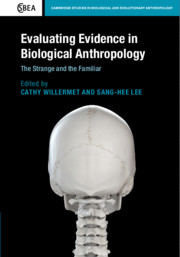Book contents
Introduction
(Re)Discovery of the Strange and the Familiar: Theory and Methods for a Twenty-First-Century Biological Anthropology
Published online by Cambridge University Press: 01 November 2019
Summary
In this unfortunate era of anti-intellectualism and fake news, it is essential that biological anthropologists engage with each other, the academy, the media, and the public about the nature of humans, how we got here, and how (and why) we vary. One of the strengths of anthropology is that we can be self-reflective. We can re-examine our questions, our theory, our methods, our data, and deal skeptically with all of them. What is a species? How do we identify groups? How do we recognize agency, or identity, or frailty, in the past? The colonial history of western science affects our interpretation of evidence (Roy 2018); now formerly colonized peoples have opportunities to produce knowledge of their own histories, so they can shift the narrative, making what was once a familiar story, strange (Rottenburg 2009; Véran 2012).
- Type
- Chapter
- Information
- Evaluating Evidence in Biological AnthropologyThe Strange and the Familiar, pp. 1 - 8Publisher: Cambridge University PressPrint publication year: 2019



